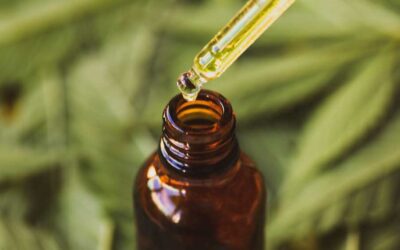As the CBD industry continues to expand, professionals need to stay informed about the key terms and concepts that define the market. Whether you’re in product development, retail, or distribution, understanding this terminology can help you communicate effectively with customers, partners, and regulators. This glossary provides a comprehensive breakdown of the most important terms in CBD.
A – C
Broad-Spectrum CBD – A CBD extract that contains multiple cannabinoids and terpenes but is THC-free. It retains the entourage effect without the risk of psychoactive effects.
Cannabinoids – The active compounds found in cannabis and hemp plants. The two most well-known cannabinoids are CBD (cannabidiol) and THC (tetrahydrocannabinol), but there are over 100 other cannabinoids, including CBG, CBN, and CBC.
Cannabidiol (CBD) – A non-intoxicating cannabinoid found in hemp and cannabis plants known for its potential therapeutic benefits, including relief from pain, anxiety, and inflammation.
Certificate of Analysis (COA) – A lab report verifying the contents of a CBD product, including cannabinoid concentration, terpene profile, and contaminants such as heavy metals and pesticides.
CBG (Cannabigerol) – Known as the “mother of all cannabinoids,” CBG is a precursor to both CBD and THC. It has potential anti-inflammatory, antibacterial, and neuroprotective properties.
CBN (Cannabinol) – A minor cannabinoid that is often associated with sedative effects, making it popular in sleep aid formulations.
Cold Pressed Extraction – A solvent-free method of extracting CBD oil by mechanically pressing hemp seeds or flowers to preserve natural cannabinoids and terpenes.
D – H
Delta-8 THC – A milder psychoactive cannabinoid derived from hemp, similar to Delta-9 THC but less potent, offering a gentler high with potential therapeutic benefits.
Delta-9 THC – The primary psychoactive compound in cannabis responsible for the “high” effect. Legally, hemp-derived CBD products must contain less than 0.3% Delta-9 THC.
Distillate – A highly refined extract containing a concentrated amount of CBD or other cannabinoids, often used in tinctures, vapes, and edibles.
Entourage Effect – The synergistic interaction of cannabinoids, terpenes, and flavonoids working together to enhance therapeutic effects compared to using CBD alone.
Full-Spectrum CBD – A CBD extract that contains all cannabinoids, terpenes, and flavonoids, including up to 0.3% THC, allowing for the entourage effect.
Hemp – A variety of the Cannabis sativa plant that contains low levels of THC (below 0.3%) and is primarily grown for CBD, fiber, and seeds.
Hemp-Derived CBD – CBD extracted from hemp plants that meet the federal legal requirement of containing less than 0.3% THC.
I – M
Industrial Hemp – A federally legal agricultural crop used for producing CBD, textiles, biofuel, and paper.
Isolate – A pure form of CBD that has been isolated from all other cannabinoids, terpenes, and plant compounds, containing 99%+ CBD with no THC.
Lipid Extraction – A CBD extraction method that uses fats and oils (such as MCT oil or coconut oil) to pull cannabinoids from the plant, making it a solvent-free option.
Microdosing – The practice of taking small amounts of CBD throughout the day to maintain consistent effects without large fluctuations.
MCT Oil (Medium-Chain Triglyceride Oil) – A common carrier oil for CBD tinctures, often derived from coconut or palm oil, known for its fast absorption.
N – S
Nano CBD – A water-soluble form of CBD processed at a nanoparticle level to increase bioavailability and absorption in the body.
Organic CBD – CBD sourced from hemp grown without pesticides, herbicides, or synthetic fertilizers, often certified USDA Organic.
Phytocannabinoids – Naturally occurring cannabinoids found in cannabis and hemp plants, including CBD, THC, CBG, and CBN.
Potency – The strength or concentration of CBD in a product, typically measured in milligrams (mg) per serving.
PCR (Phytocannabinoid-Rich) Hemp Oil – A term used to describe full-spectrum or broad-spectrum hemp extracts rich in various cannabinoids and terpenes.
Sublingual Administration – The method of taking CBD oil under the tongue for rapid absorption into the bloodstream via the mucous membranes.
Solvent Extraction – A method that uses ethanol, CO2, or hydrocarbons to extract CBD from hemp. CO2 extraction is the most common and cleanest method.
T – Z
Terpenes – Aromatic compounds found in hemp that contribute to flavor, scent, and therapeutic benefits. Examples include limonene (citrus), myrcene (earthy), and linalool (floral).
Tincture – A CBD oil product designed for sublingual use, often mixed with a carrier oil like MCT oil for better absorption.
Topicals – CBD-infused products like creams, balms, and lotions that are applied directly to the skin for localized relief.
THC-Free – A designation for broad-spectrum CBD or CBD isolate products that do not contain detectable levels of THC.
Third-Party Testing – Independent lab testing that verifies a CBD product’s cannabinoid content, purity, and safety, ensuring it is free from contaminants.
Vape CBD – CBD formulated for vaporization, usually sold in CBD vape pens, cartridges, or e-liquids. This method allows for fast-acting effects but is subject to regulatory scrutiny.
Water-Soluble CBD – A form of CBD that dissolves in water, increasing absorption rates when added to beverages and edibles.
Whole-Plant Extract – A CBD extract that contains all plant compounds, including cannabinoids, terpenes, flavonoids, and essential fatty acids, promoting the entourage effect.
Staying Ahead in the Evolving CBD Industry
Whether you’re a CBD retailer, product developer, or industry professional, understanding key CBD terminology is essential for staying ahead in this rapidly growing market. As the industry evolves, new terms and technologies will emerge, making ongoing education crucial for success.
Bookmark this glossary and refer to it when explaining CBD-related concepts to customers or industry partners. Keeping up with CBD innovations and terminology ensures you stay informed, compliant, and ready to meet consumer demand in an increasingly competitive marketplace.


